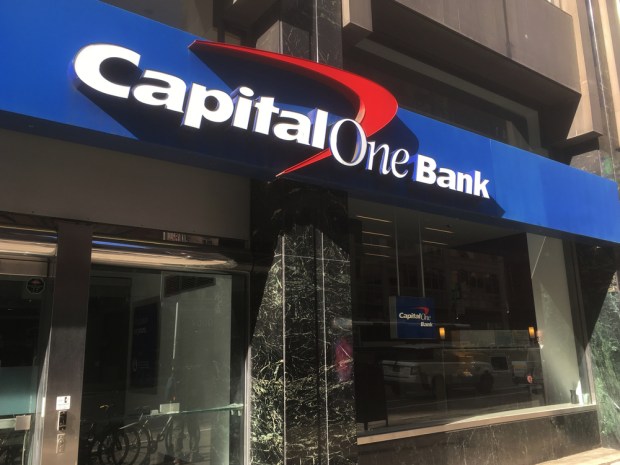Capital One Tops Q1 Views; Credit Card Loans Up 2 Pct

Capital One Financial posted results that were higher than Street estimates as its core card business grew, as did commercial lending activity.
The headline numbers showed that adjusted earnings per share of $2.90 were better than consensus by 17 cents.
Adjusted revenues were $7.08 billion, outpacing the $7.01 billion that had been expected by the Street.
Drilling down a bit, net interest income for the quarter that ended in March was $5.8 billion, which was up one percent.
Period end total deposits were up two percent to $255.1 billion, and average deposits were also up two percent to $251.4 billion, representing an increase of $3.7 billion.
At the period end, consumer banking loans were flat at $59.2 billion. Auto loans at the end of the period were up $103 million, up less than one percent to $56.4 billion.
Supplemental materials showed that the allowance for loan and lease losses was $7.3 billion, down three percent from last year, and as a ratio against loans were 3.04 percent, and down one basis point from last year. The company said that provisions for credit losses were $1.7 billion, net charge-offs at $1.6 billion, and the net charge-off rate was 2.64 percent, up five basis points from last year.
In reference to credit card operations, the company said that as average loans were up $2 billion, purchase volume was up eight percent, and the revenue margin of 16.3 percent on the loan book was up three percent year over year. The net charge-off rate improved by 13 basis points, to 4.90 percent. Within that segment, the company showed that in the domestic card business, the 30 day delinquency rate worsened by 15 basis points year over year to 3.72 percent.
Commercial and commercial real estate loans increased eight percent in the latest quarter to $71.2 billion.
In reference to the auto lending business, the company’s first quarter showed that auto loans originations were $6.2 billion, compared to $6.7 billion last year. And at origination, the percentage of customers with FICO scores greater than 660 was 49 percent, 621-660 at 19 percent of originations, and 620 or below FICO at 32 percent.
